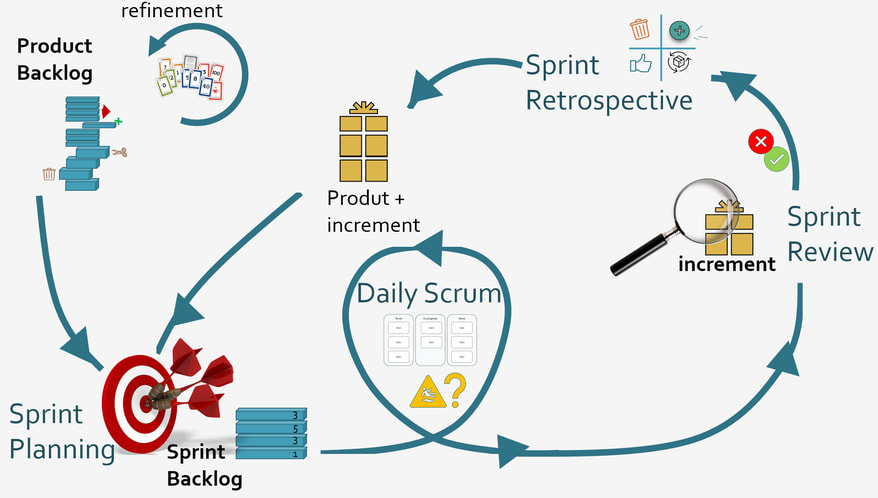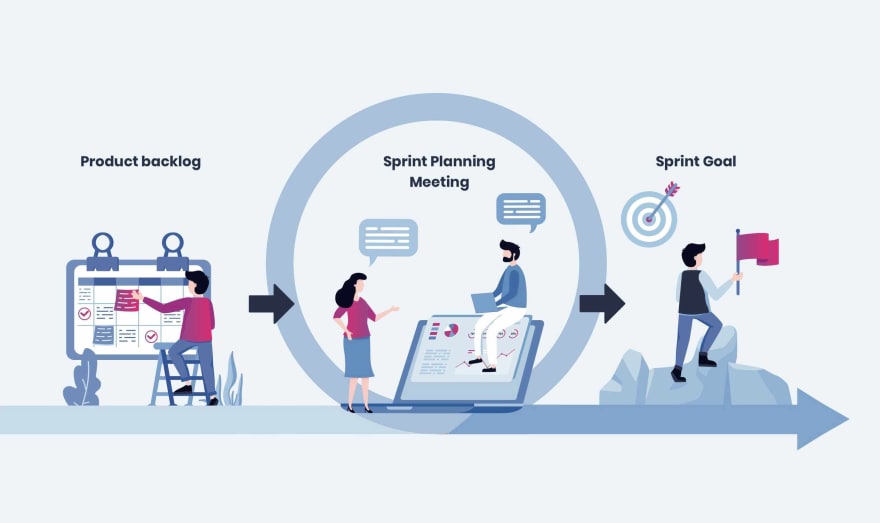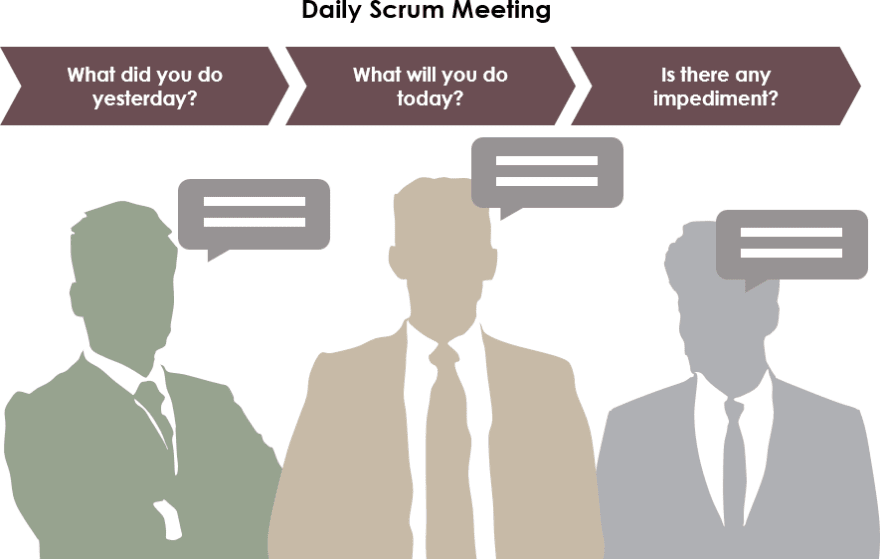Learn how the scrum ceremonies help agile teams plan, work, and communicate efficiently.
In the last few years, a large number of organizations have implemented agile successfully, irrespective of the team size and product. Scrum is an agile development methodology that helps people and teams solve complex problems. Individuals that implement the scrum methodology are known for collaboration, communication, and organization.
Scrum ceremonies help agile teams to get work done fast, improve accountability, and foster continuous improvement in a structured manner. The ceremonies are crucial to the success of any project in a software organization because of the amount of meetings required to ensure a smooth software delivery with short release cycles and deployments. They’re known to help drive results and improve team collaboration, which is the essence of scrum.
In this article, you’ll learn about the five scrum ceremonies, their benefits, and the value they bring to an agile team.
What Is Scrum?
Scrum is a commonly used framework by software development teams that helps get work done quickly and collaboratively, whereas agile is the mindset. Scrum provides a way for the team to implement agile principles and adapt to rapidly changing user requirements.
The scrum team consists of software developers, project managers, a scrum master, QA engineers, product owners, and technical managers. With CI/CD on the rise, and with the latest tools on the market, most teams opt for shorter iterations called sprints that are commonly two or three weeks long.
The well-known artifacts of the scrum framework are the product backlog, sprint backlog, and end product from a sprint. There are many available project management tools like Jira, Trello, monday.com, Wrike, and Asana that provide a visual display of a scrum project, complete with tasks and impediments pertaining to that project.
What Are Scrum Ceremonies?
The scrum guide talks about five specific events (ie meetings) in the scrum framework. These events are referred to as scrum ceremonies and are conducted by an agile team with a clear goal in mind.
During software development, there is an extensive need for transparency, effective communication, discussions of pitfalls, and knowledge of the ultimate goal of the sprint. The five scrum ceremonies help manage, plan, capture, report, and track stories and bugs during and after a release cycle.
Scrum ceremonies are the backbone of the scrum framework and help the entire team to communicate where they are in a project during the sprint. Prioritization, estimation, planning, insight generation, and bug reporting are a few of the goals achieved by the scrum ceremonies.
The Five Key Scrum Ceremonies
The five scrum ceremonies are sprint planning, daily scrum/standup, sprint review, sprint retrospective, and backlog refinement.
Sprint Planning
Before beginning a sprint, the entire agile team discusses the sprint goal and the work that needs to be completed. At times, the effort can change the priority of the stories in the backlog. The team then creates tasks and provides estimates for each story.
In a sprint planning meeting, the team commits to completing a certain amount of work collectively by the end of the sprint, taking into account the product backlog and the work that needs to be developed, tested, and delivered. The team members’ PTO schedules, availability, holidays, and other commitments are taken into consideration along with past performance.
Product owners, developers, QA engineers, and the scrum master typically attend the sprint planning meeting. An effective meeting paves way for a dynamic start to the sprint and enhances the overall productivity of the team by helping team members evaluate their goals and align their work accordingly for the upcoming sprint.
By the end of a sprint planning meeting, user stories are assigned based on the requirements and sprint goal. By reviewing past sprints, you can adjust the length of a sprint as needed based on the amount of work completed at the end of a sprint.
Daily Scrum/Standup
The core essence of scrum is the daily standup meeting. It’s typically limited to fifteen minutes, and the goal of the meeting is to discuss the following three questions:
- What did you complete yesterday?
- What are you working on today?
- Are there any blockers that are preventing you from completing your task?
Usually, the scrum master facilitates the daily standup and ensures daily accountability and transparency within the team. All attendees are aware of the work that has been done, and the standup provides them a chance to collaborate and eliminate blockers.
It’s usually scheduled in the morning and gives everyone a chance to discuss their progress and blockers before the workday begins. Effective daily standups set the team up for success in the long run.
Sprint Review
The sprint review is a scrum ceremony that showcases the result of a fruitful sprint. Most of the time, a sprint review meeting includes the demo of a working product and gives team members a chance to present the work that was conducted during the sprint.
The review meeting ensures the goals were met based on the requirements discussed in earlier meetings and delivered in the allotted time frame. This step can often help in boosting the team’s morale.
It opens room for feedback and allows overall improvement for future release cycles. A review typically runs for an hour and is attended by the software development team and key stakeholders.
Sprint Retrospective
Scrum encourages and accommodates rapid changes, and the sprint retrospective meeting is an opportunity for the entire team to look back on the sprint and the work that was done. This scrum ceremony opens up discussions on improving existing processes, commending what went well, and reviewing what could be done better next time.
This hour-long retrospective meeting takes place at the end of each sprint and results in action items. This is a meeting filled with feedback, suggestions, and actions. Healthy discussions take place without blaming anyone in the team, and the scrum master ensures that constructive criticism is implemented throughout. This meeting ultimately leads to changes in the way work is carried out in future sprints.
Team members work together to resolve issues and most importantly celebrate the successes of a sprint.
Backlog Refinement
Backlog grooming or backlog refinement is another scrum ceremony that primarily focuses on improving and better organizing the work in a pipeline. This meeting paves the way for a successful future sprint.
The product owner, along with other key members of the team, takes responsibility for adding new items as well as updating and re-ordering the stories and tasks in the backlog. The goals of this meeting also include cleaning up the product backlog and getting rid of outdated tasks and issues pertaining to a project. Often the backlog refinement meeting ensures that technical debt doesn’t increase with time and that the workload doesn’t increase with changing requirements from the client.
It enables the team to visualize and adjust their work for upcoming sprints. To make it easier for future sprint planning sessions, the backlog refinement meetings enable the team to visualize and adjust their work for upcoming sprints, improving efficiency.
Benefits of Scrum Ceremonies for Agile Teams
The scrum ceremonies mentioned above help an agile team fulfill the core principles of scrum. These meetings provide incredible value to the software development team in many ways, including:
- Improving accountability. The development team is held accountable during and after the sprint for the work that needs to be completed. Accountability increases with the help of daily standups and sprint retrospective meetings.
- Providing the team with a platform to collaborate and make informed decisions based on capacity and skills.
- Increasing feedback and insights that impact the overall productivity of the team.
- Increasing communication as the members work together to identify, mitigate, and fix issues.
- Increasing the bond within the team as they meet daily through the standup meetings.
- Reflecting back on the previous sprint to help the team reach a common goal and collectively improve productivity.
- Enabling the agile teams to become self-managed.
- Maximizing software quality, team building, and responsiveness to crises by regularly updating and reviewing scrum meeting agendas.
Conclusion
In order to constantly adapt and incorporate change in existing agile teams, scrum ceremonies are a necessity. These rituals are needed to constantly maintain and manage an agile team while delivering results faster and with constructive feedback.
Scrum ceremonies add value and benefits that configure a scrum project and set the team up for success. Responding to changes and issues becomes easy as you work through the five scrum ceremonies while simultaneously improving your process for future development projects.
By Sheekha Singh. Sheekha has been in the IT/tech industry for 7+ years, working in the US and Canada as a software engineer. Sheekha is also the author of the bestselling book "The IT Girl: 3 Steps to Find Career Options for Young Women in Tech".








Top comments (0)